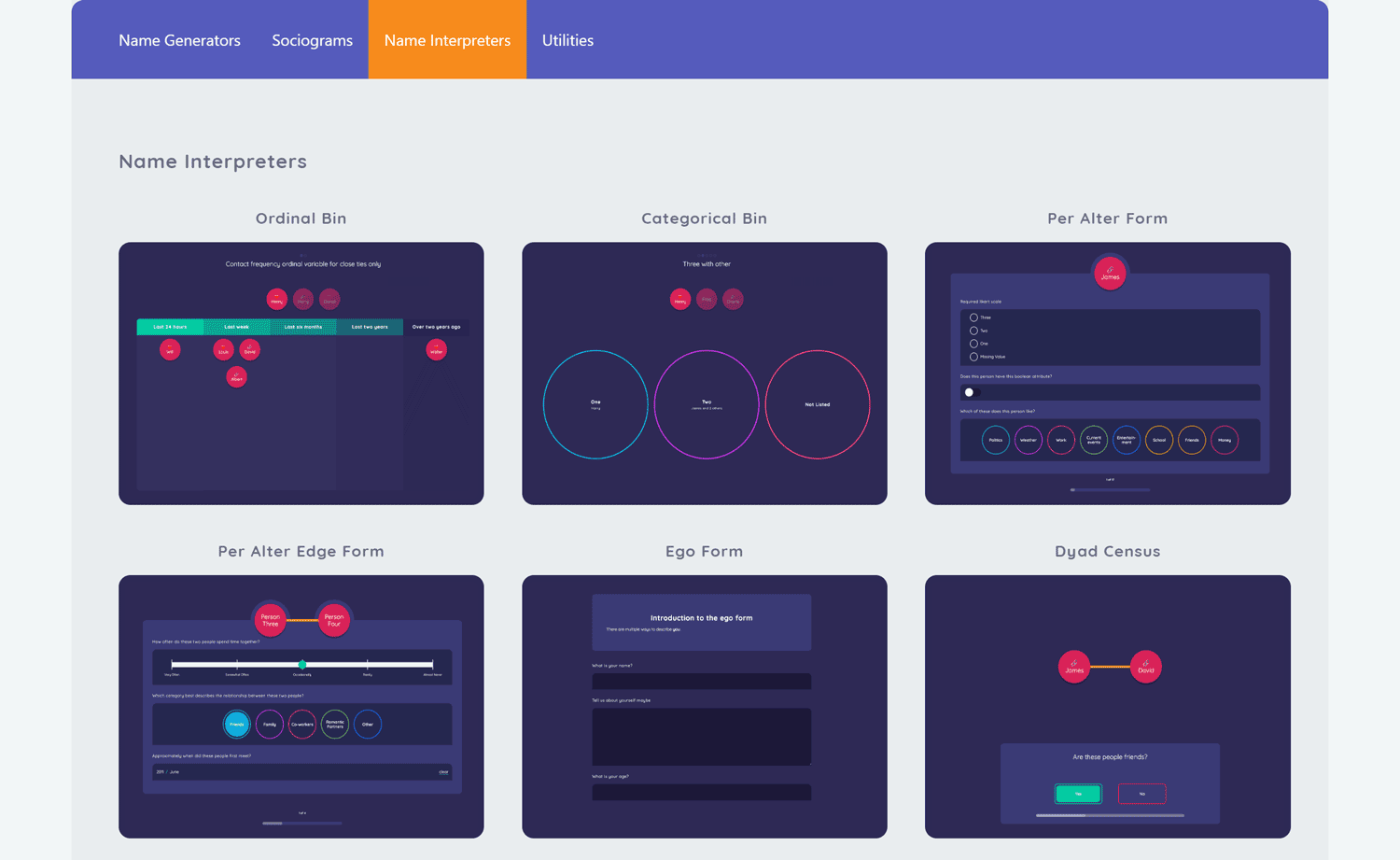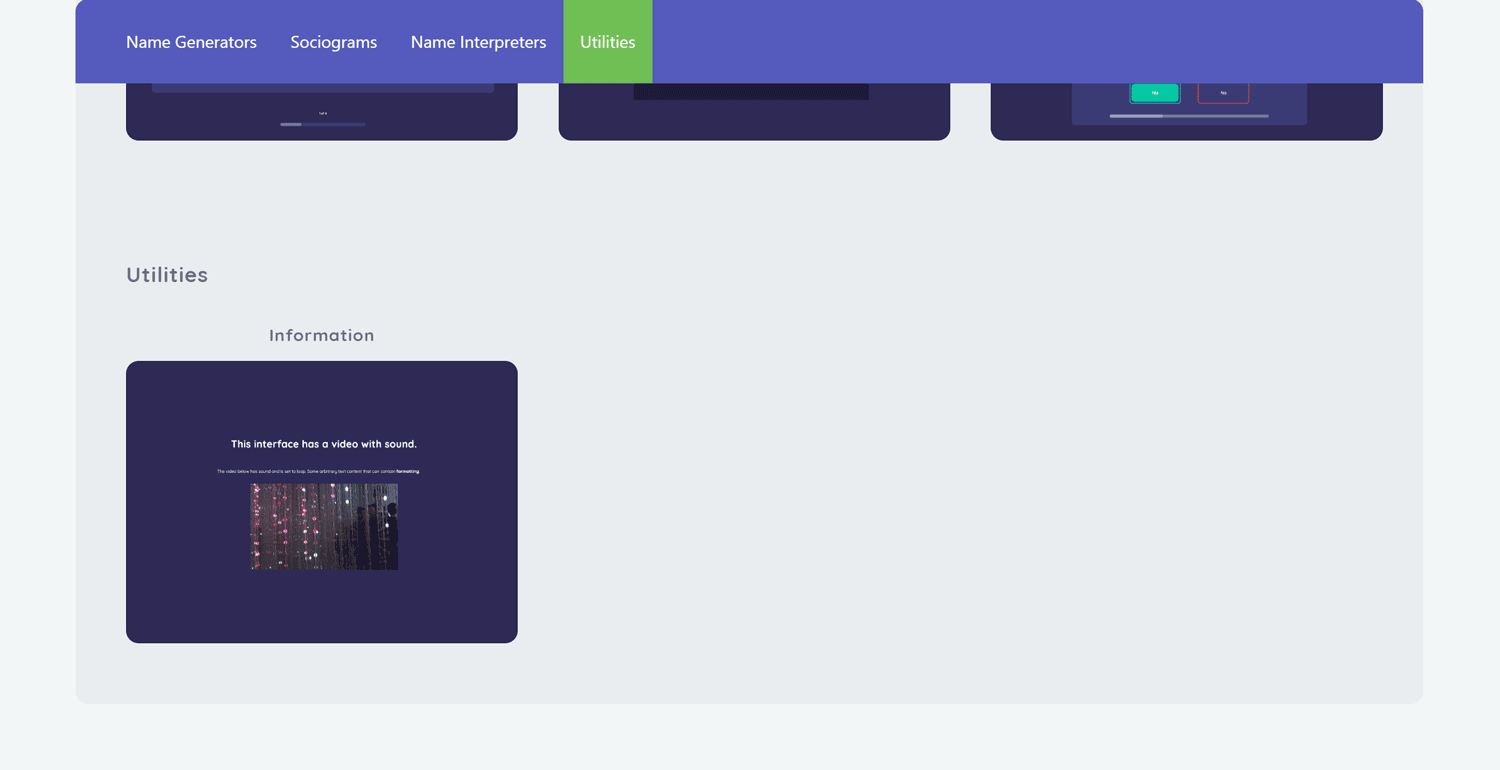desktop 🠖 key concepts
Interfaces
Details
Interviews in Network Canvas are comprised of one or more stages, which can be thought of as the individual screens that a participant sees. Each stage is an instance of an Interface that has been configured to collect specific variables or create nodes and edges. Interfaces are therefore the most fundamental building blocks of a Network Canvas interview.
Each Interface is designed to accomplish a single specific task in the network interview. Some tasks, such as edge generation, can be accomplished with different Interfaces. You choose which Interface to use when designing your interview in Architect based on your research needs.
Types of interfaces
Interfaces can be broadly categorized as: name generators, sociograms, name interpreters, or utilities.
Name Generator interfaces
Name Generators allow participants to create alters during the course of an interview, thereby describing one of the two main entities in your study's networks. There are four Name Generator Interfaces available, each designed for specific scenarios:
- Name Generator (using forms) - Collect detailed information about each alter as they are named
- Name Generator (using quick add) - Quickly name multiple alters before collecting attributes
- Small Roster Name Generator - Select alters from a predefined list (best for rosters under 100)
- Large Roster Name Generator - Select alters from large rosters with search functionality

Sociogram interfaces
Sociograms are the visual mapping component of a network interview. On the Sociogram, participants draw ties between alters to signify the relationships between individuals within their personal network, describing the other main entity in your study's networks.
There are two Sociogram Interfaces in Network Canvas:
- Sociogram - Interactive Interface for collecting edge data by having participants draw connections between alters
- Narrative - Display-only Interface for showing the participant's network without collecting data

Name Interpreter interfaces
Once a protocol contains entities, Name Interpreter Interfaces can be used to collect additional information and build upon existing alters or ties. These Interfaces include:
- Ordinal Bin - Sort alters into ordered categories using a visual bin interface
- Categorical Bin - Sort alters into unordered categories using a visual bin interface
- Per Alter Form - Collect detailed attribute data about each alter using forms
- Per Alter Edge Form - Collect attribute data about edges using forms
- Ego Form - Collect data about the participant themselves
- Dyad Census - Systematically ask about relationships between all pairs of alters

Utility interfaces
The Information Interface is a general purpose stage that can be used to present information to participants using a variety of text and media resources. This is helpful in explaining stage functionalities and increasing participant comprehension.

Related concepts
- Prompts - Configure participant-facing questions for stages
- Forms - Build forms used in Form-based Interfaces
- Variables - Define data fields to collect in Interfaces
- Skip Logic - Conditionally show or skip stages based on data
- Network Filtering - Control which nodes or edges appear within a stage